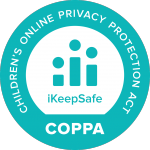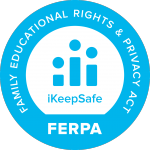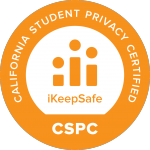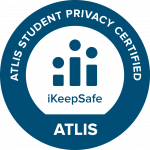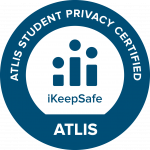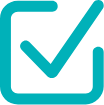Today’s classrooms look dramatically different than they did just a decade ago. Interactive displays have replaced chalkboards, students collaborate on coding projects, and robotics challenges buzz with activity. This transformation isn’t about chasing trends, though, it’s about preparing students for a future where STEAM (Science, Technology, Engineering, Arts, and Math) skills are essential.
Whether you’re upgrading your existing classroom or starting fresh, building a future-ready STEAM environment doesn’t have to be overwhelming. With the right roadmap, you can create a learning space that sparks creativity, encourages critical thinking, and fosters 21st-century collaboration skills.
Essential Tech Infrastructure
1. Student Devices
Personal devices are the gateway to digital learning. Chromebooks, tablets, or laptops give students access to coding platforms, collaborative tools, research resources, and interactive learning experiences.
Pro tip: Invest in reliable charging solutions like mobile carts or charging stations. Dead batteries disrupt learning, and organized charging teaches students responsibility.
2. Robotics Kits
Robotics transforms abstract concepts into hands-on experiences, helping students become technology creators rather than just consumers.
The Ozobot Evo offers a unique way to teach both screen-free and screen-based coding, making it ideal for K–12 learners. Whether you’re drawing color-coded tracks or using Ozobot Blockly, Evo brings creativity and computation together in one tiny robot. Students can start by drawing simple paths with markers, watching Evo respond to color codes in real-time. As they advance, they transition to block-based programming, creating complex behaviors and interactive games. This progression naturally scaffolds learning from concrete to abstract thinking, making coding concepts accessible to learners at every level.
3. Digital Tools That Expand Possibilities
The right software can transform any lesson into an interactive adventure. Build your digital toolkit around these essential categories:
Coding Platforms: Start with visual programming languages like Blockly, Scratch, or Tynker. These platforms make programming concepts accessible while building computational thinking skills that transfer across subjects.
Immersive Experiences: AR/VR tools like Merge EDU or CoSpaces Edu can transport students to ancient Rome, inside the human circulatory system, or to the surface of Mars. These experiences make abstract concepts concrete and memorable.
3D Design Tools: Platforms like Tinkercad and SketchUp empower students to design solutions to real-world problems. Whether they’re creating prosthetic devices, architectural models, or artistic sculptures, 3D design tools bridge imagination and reality.
Creating Hands-On Learning Experiences
4. Maker Space Essentials for Creative Problem-Solving
Every STEAM classroom benefits from embracing the maker mindset. You don’t need a dedicated makerspace—just strategic supplies that encourage hands-on creativity and experimentation.
Stock your classroom with basics like cardboard, hot glue guns, scissors, LEDs, and copper tape. These simple materials become powerful tools when students are designing solutions. Add circuit kits like Makey Makey or Snap Circuits to introduce electronics concepts in approachable ways.
If your budget allows, consider adding 3D printers or laser cutters for prototyping. However, remember that innovation often comes from constraints—some of the most creative solutions emerge when students must work with simple materials and big imaginations.
5. Teacher Technology for Effective Instruction
As the classroom leader, you need tools that help you model, demonstrate, and facilitate learning effectively. An interactive whiteboard or large display serves as your central hub for sharing content, showcasing student work, and facilitating group discussions.
A document camera proves invaluable for real-time demonstrations, whether you’re showing circuit connections, dissecting a flower, or modeling problem-solving strategies. Pair these with a robust Learning Management System like Google Classroom, Seesaw, or Canvas to streamline communication, assignment distribution, and progress tracking.
Supporting Collaboration and Assessment
6. Connectivity That Keeps Learning Flowing
Strong, stable internet isn’t just helpful—it’s essential. Your classroom’s Wi-Fi needs to support multiple devices running various applications simultaneously. Work with your IT department to ensure adequate bandwidth and check that firewall settings don’t block educational apps and websites your students need.
7. Quality Curriculum and Training
Great tools need strong teaching foundations. Look for standards-aligned lesson plans with hands-on learning pathways.
Ozobot Classroom is a free STEAM lesson portal that makes it easy to engage students in all subjects, complete with standards-aligned lessons and activities. Ozobot also offers Professional Development—from self-paced courses to live, virtual sessions for teams of 10 or 20, these PD offerings ensure seamless integration of Ozobot into classrooms and districts.
Professional development builds confidence with new technologies and helps you maximize your investment in classroom tools.
8. Tools for Student Voice and Choice
STEAM education thrives when students can express ideas creatively and collaborate effectively. Digital collaboration tools empower students to brainstorm, build, and present their learning in engaging ways.
Platforms like Jamboard, Padlet, or Miro support virtual brainstorming and design thinking processes. Video creation tools like Flip, iMovie, or WeVideo help students document their learning journey and share their discoveries. Design platforms like Canva or Adobe Express enable students to create professional-quality presentations and infographics.
9. Assessment Tools That Guide Learning
Effective formative assessment tools help you adjust instruction in real-time while giving students opportunities for reflection and improvement. Game-based platforms like Kahoot!, Quizizz, or Formative make learning checks engaging rather than stressful.
Digital portfolios through Seesaw, Google Sites, or Book Creator allow students to document their growth over time, reflect on their learning processes, and take ownership of their educational journey.
Building an Inclusive Learning Environment
10. Equity and Accessibility at the Forefront
A truly effective STEAM classroom serves all learners. Ensure your technology setup supports diverse learning needs and provides equitable access for every student.
Consider accessibility features like closed captions and screen readers. Voice typing and translation tools can support multilingual learners. Flexible furniture and mobile setups allow you to adapt your space to individual needs and different learning activities.
Your Implementation Strategy
Building a comprehensive STEAM classroom doesn’t require purchasing everything at once. Start with your highest priorities based on your specific context:
Phase 1: Focus on student devices and reliable connectivity
Phase 2: Add core STEAM tools like robotics kits and basic maker supplies
Phase 3: Expand with specialized software and advanced maker tools
Phase 4: Enhance with collaboration tools and assessment platforms
The Bottom Line
The goal isn’t having the latest technology—it’s developing students who think critically, solve problems creatively, and collaborate effectively. Technology is the vehicle, but the destination is preparing students for a future where adaptability, creativity, and technical literacy matter most.
Start where you are, use what you have, and build toward your vision of an engaging 21st-century learning environment. Your students are counting on you to prepare them for whatever challenges and opportunities lie ahead.




